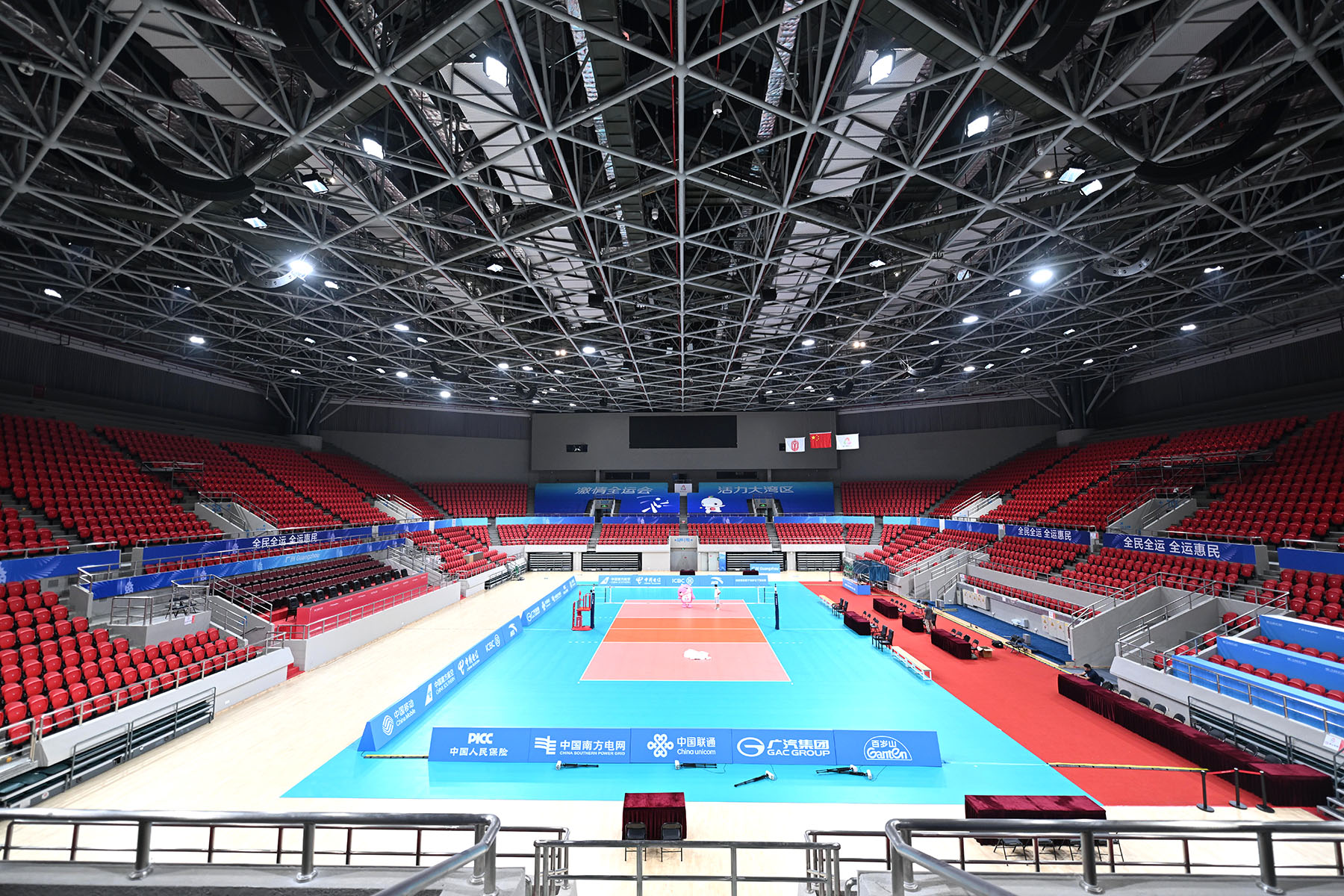
While audiences across the country were left electrified by the spectacular opening ceremony of the 15th National Games, the Guangdong Olympic Sports Center itself was being energized by 800 photovoltaic panels that will provide continuous green energy throughout the massive multisport gala.
Located in the Tianhe district of the provincial capital Guangzhou, the sports center, which was built in 2001, is one of a number of venues across Guangdong that have been renovated with a green and smart approach in preparation for the ongoing Games.
"Installation of the photovoltaic panels aims to upgrade the venue into a green and low-carbon modern sports facility," said Luo Jianhe, chief designer responsible for the upgrade and renovation of the stadium.
READ MORE: Celebrating the people's Games
The panels are expected to generate an annual output of over 420,000 kWh, helping to reduce carbon emissions by up to 200 tons, according to Luo.
The Games will take place at a total of 105 sports venues across 18 cities throughout Guangdong and the two special administrative regions of Hong Kong and Macao.
In Guangdong, over 90 percent of the competition venues are existing facilities that have been renovated and upgraded, according to the Games' organizers.
During the renovation, a total of 150,000 square meters of green space, 19 outdoor sports areas and 10 outdoor fitness tracks have been installed in Guangzhou, according to the Games' organizers.
An additional 28,000 sq m of public space and an all-weather circular track on the second-level platform of Guangdong Olympic Sports Center have also been completed.
In Tianhe Sports Center in downtown Guangzhou, a 941-meter professional fitness track around its perimeter and a 700m covered track on the center's second-level platform have been completed, and is expected to serve over ten million runners annually.

All 30 venues in Guangzhou will be powered entirely by green energy, with construction of 13,000 sq m of photovoltaic facilities, according to Guangzhou Eco-environment Bureau.
In terms of green and low-carbon initiatives, the Tianhe Sports Center has become the first large-scale near-zero carbon stadium in the country following its upgrade, achieving a breakthrough carbon reduction rate of over 52 percent, according to the bureau.
In Shenzhen, local authorities have also promoted a self-circulating clean energy ecosystem during the renovation of its existing venues.
The widespread use of high-efficiency direct current inverter air conditioning, all-LED lighting systems and recyclable building materials in Shenzhen have promoted the concept of zero waste sports events.
ALSO READ: Tech and sports unite at National Games
Additionally, 150 new energy logistics delivery vehicles and four zero-emission, pollution-free hydrogen energy vehicles will be introduced across the venues during the Games. The world's first hydrogen energy emergency power vehicle, integrated with solid-state hydrogen storage technology, will also be put into use in Guangzhou.
In another development, advanced technologies and facilities have helped equip the Games' venues with intelligent operating systems, according to the event's organizers.
At Shenzhen Sports Center, a digital system has been installed, allowing management an intelligent one-screen overview of the venue, and one-click scheduling of resources.
In Guangzhou, introduction of AR real-time navigation at the Guangzhou Gymnasium makes finding seats easy and convenient for spectators, while the AI security system has advanced capabilities to anticipate risks and automatically manage crowd flow.
Contact the writers at qiuquanlin@chinadaily.com.cn


